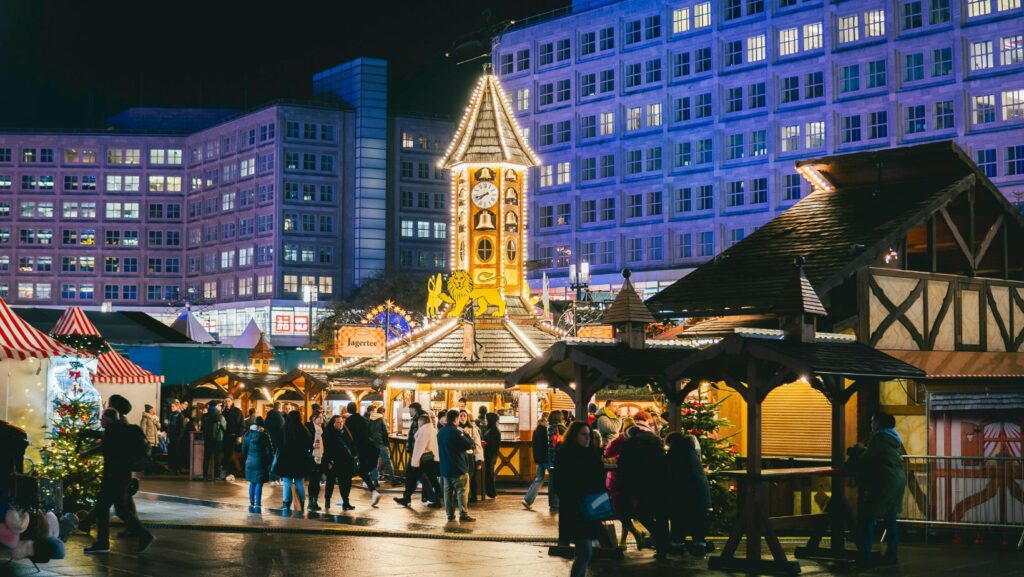Outdoor marketing events have become a powerful way for brands to engage directly with their audience. From brand activations and product launches to corporate networking events, companies are leveraging outdoor settings to create immersive and memorable experiences. These events provide a unique opportunity to interact with consumers, showcase products in real time, and enhance brand visibility in an open, inviting environment.
However, proper planning is crucial to ensure a seamless execution. Unlike indoor events, outdoor marketing experiences require extra consideration for guest comfort, weather conditions, permits, and logistics. From securing the right venue to managing technical setups and branding elements, attention to detail is key.
This guide outlines the essential components you need to plan a successful outdoor marketing event that impresses guests and elevates your brand.
1. Choosing the Right Venue
Selecting the perfect venue is the foundation of your outdoor marketing event. The space should align with your brand’s image while also offering practical benefits for logistics and guest engagement.
- Find a location that fits your theme and brand identity. Consider settings like:
○ Parks: Ideal for relaxed, open-air brand activations and wellness-related events.
○ Urban spaces: Rooftops, plazas, and city centers offer a modern, high-energy vibe.
○ Waterfront locations: Stunning views can enhance product launches or VIP experiences.
○ Private estates or vineyards: Perfect for exclusive corporate events or high-end activations.
- Ensure accessibility for guests and vendors. Check for:
○ Adequate parking or shuttle services.
○ Easy access for event staff, catering, and technical crews.
○ ADA-compliant pathways and restroom facilities.
- Understand the logistics and legal requirements. This includes:
○ Permits: Many public spaces require special permits for events, alcohol service, or amplified sound.
○ Noise regulations: Be aware of local restrictions, especially for events with live music or speakers.
○ Curfews and cleanup policies: Some venues have strict timelines for setup and teardown.
Choosing a venue that meets these requirements will help avoid last-minute challenges and ensure a smooth experience for everyone involved.
2. Guest Comfort & Accommodations
Making guests feel comfortable is a top priority for any outdoor marketing event. Without the amenities of an indoor venue, you’ll need to provide solutions for seating, restrooms, and climate control to keep attendees engaged.
-
Luxury Restroom Rentals:
○ Avoid standard porta potties—opt for upscale mobile restrooms that offer running water, mirrors, and climate control.
○ Ensure restrooms are placed conveniently but discreetly to maintain the event’s aesthetic.
-
Shaded Areas & Seating:
○ Tents, umbrellas, or branded lounge spaces provide relief from sun and rain.
○ Comfortable seating areas encourage attendees to stay longer and interact with your brand.
-
Climate Control Considerations:
○ For hot weather: Offer cooling fans, hydration stations, and misting areas.
○ For cold weather: Provide portable heaters, blankets, and warm beverage stations.
Addressing these details will keep guests engaged and create a more enjoyable event experience.
3. Power & Technical Setup
Since outdoor venues often lack built-in power sources, securing the right technical infrastructure is essential for smooth operations.

-
Portable Generators:
○ Power event lighting, speakers, and digital screens.
○ Choose quiet generators to avoid disrupting presentations or performances.
-
Reliable Wi-Fi & Connectivity:
○ Ensure event staff, vendors, and attendees can stay connected.
○ Consider dedicated hotspots for seamless digital activations and live streaming.
-
Backup Power Solutions:
○ Having extra batteries or a secondary power source prevents technical disruptions.
○ Test all equipment before the event to avoid last-minute troubleshooting.
Proper planning in this area ensures that all branding, entertainment, and technical components function flawlessly.
4. Branding & Engagement Elements
Your outdoor event is a branding opportunity, so every visual and interactive element should reflect your brand identity.
-
Custom signage and backdrops:
○ Use branded banners, LED screens, or step-and-repeat walls to reinforce your brand message.
○ Consider projection mapping for high-impact visual displays.
-
Interactive Stations:
○ Photo booths, augmented reality experiences, and digital activations engage guests.
○ Offer branded giveaways like tote bags, custom merchandise, or discount vouchers.
-
LED Screens & Presentation Areas:
○ Use large-format digital screens to display key messages, videos, or social media interactions.
○ Consider a small stage or speaking area for product demos or keynote speeches.
These elements ensure your brand is front and center, leaving a lasting impression on attendees.
5. Catering & Refreshments
Providing food and drinks can enhance the guest experience and encourage people to stay longer.
-
Branded Food Trucks or Pop-Up Bars:
○ Offer custom-themed drinks or snacks that align with your brand message.
○ Consider local vendors to add a community-driven touch.
-
Hydration & Beverage Stations:
○ Provide water stations, coffee bars, or signature cocktails to keep guests refreshed.
-
Accommodating Dietary Needs:
○ Offer vegetarian, vegan, and allergen-free options.
○ Clearly label food items for easy selection.
A well-thought-out food and beverage plan adds value to the overall guest experience.
6. Entertainment & Experience Enhancements
Outdoor marketing events should engage, entertain, and immerse guests in the brand experience.
-
Live Music, DJ, or Speakers:
○ Create the right atmosphere with music or keynote presentations.
○ Ensure sound levels comply with venue restrictions.
-
Interactive Experiences:
○ Product demonstrations, influencer meet-and-greets, or contests.
○ Gamification elements (e.g., digital scavenger hunts) to increase engagement.
-
Networking Lounges:
○ Design comfortable branded lounge areas for attendees to interact.
These elements keep energy levels high and create meaningful engagement with your brand.
7. Event Logistics & Flow
A well-organized event ensures a smooth experience for attendees and staff.

-
Clear Signage & Pathways:
○ Direct guests to key areas like seating, activations, and restrooms.
-
Check-in & Registration Stations:
○ Offer seamless digital check-in with QR codes or guest lists.
-
Dedicated Spaces for Sponsors & VIPs:
○ Ensure sponsors get premium visibility and VIP guests have exclusive seating areas.
Strong logistics planning keeps the event running efficiently and avoids guest frustration.
8. Clean-Up & Sustainability Considerations
Leaving the venue in pristine condition is essential for maintaining positive relationships with vendors and communities.
-
Eco-Friendly Waste Management:
○ Provide clearly marked recycling and compost stations.
○ Consider sustainable food packaging and reusable event materials.
-
Sustainable Vendor Partnerships:
○ Work with eco-conscious caterers, suppliers, and rental companies.
-
Organized Post-Event Cleanup:
○ Have a team dedicated to breakdown and waste disposal.
A sustainable approach reflects well on your brand and enhances event credibility.

